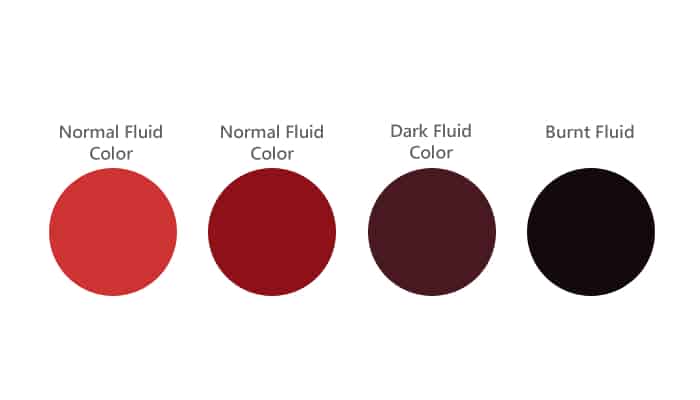Understanding Transmission Fluid for Your Honda CR-V
When it comes to maintaining your Honda CR-V, one of the most critical aspects is ensuring you use the right transmission fluid. The transmission fluid plays a vital role in the performance and longevity of your vehicle’s transmission. For the 2019 Honda CR-V, Honda has specific recommendations that you should follow to keep your vehicle running smoothly.
Manufacturer’s Recommendations
| Popular posts |
|---|
| What to do to prolong the life of your manual gearbox |
| Automatic transmission: what it is, how it works |
Honda specifies that the 2019 CR-V requires Honda HCF-2 transmission fluid. This fluid is specially formulated to meet the unique demands of Honda’s Continuously Variable Transmission (CVT). Using the correct fluid is not just a suggestion; it’s essential for maintaining the integrity of your transmission system.
Why Use Honda HCF-2 Transmission Fluid?
Using the recommended Honda HCF-2 fluid is crucial for several reasons:
- Optimal Performance: This fluid is designed to provide the best performance for your CR-V’s CVT, ensuring smooth shifting and optimal power delivery.
- Temperature Stability: Honda HCF-2 fluid maintains its viscosity under various temperature conditions, which is vital for the operation of your transmission.
- Wear Protection: The fluid contains additives that help reduce wear on internal components, extending the life of your transmission.
- Warranty Compliance: Using the manufacturer-recommended fluid helps ensure that your warranty remains intact. If you use an incompatible fluid, you risk voiding your warranty.
Specifications of Honda HCF-2 Fluid
Understanding the specifications of Honda HCF-2 fluid can help you appreciate why it’s the right choice for your CR-V. Here are some key specifications:
- Viscosity: Honda HCF-2 fluid has a specific viscosity rating that is optimized for the CVT system.
- Friction Characteristics: The fluid is engineered to provide the right amount of friction for optimal clutch engagement.
- Oxidation Stability: This fluid is designed to resist breakdown over time, ensuring that it maintains its protective qualities.
- Compatibility: Honda HCF-2 is formulated specifically for Honda vehicles, ensuring compatibility with the materials used in your transmission.
Where to Find Honda HCF-2 Fluid
You can find Honda HCF-2 transmission fluid at various locations:
- Honda Dealerships: The most reliable source for genuine Honda HCF-2 fluid.
- Auto Parts Stores: Many auto parts retailers carry Honda HCF-2 fluid, but always check the label to ensure it’s the correct type.
- Online Retailers: Websites like Amazon or specialized automotive sites often have Honda HCF-2 fluid available for purchase.
In summary, using the correct transmission fluid is non-negotiable for the health of your 2019 Honda CR-V. Stick to Honda HCF-2 to ensure your vehicle operates at its best.
Recommended Oil Brands for Your Honda CR-V
When it comes to choosing the right transmission fluid for your 2019 Honda CR-V, many owners turn to various brands that meet or exceed the manufacturer’s specifications. While Honda HCF-2 is the recommended fluid, there are other brands that have garnered positive feedback from CR-V owners on forums and automotive communities. Below, we will explore some of the most recommended oil brands based on real-world experiences and owner feedback.
Honda Genuine HCF-2
It’s no surprise that the top recommendation comes directly from Honda. The genuine Honda HCF-2 fluid is specifically formulated for your CR-V’s Continuously Variable Transmission (CVT). Many owners swear by it, citing:
- Performance: Users report smoother shifting and better overall performance when using the genuine fluid.
- Longevity: Many owners have noted that their transmissions last longer when using Honda’s recommended fluid.
- Warranty Protection: Sticking with Honda’s fluid helps ensure that your warranty remains valid.
Valvoline CVT Fluid
Valvoline is a well-known name in the automotive industry, and their CVT fluid has received positive reviews from Honda CR-V owners. Key points from user feedback include:
- Affordability: Valvoline CVT fluid is often more budget-friendly than OEM options, making it a popular choice for cost-conscious owners.
- Compatibility: Many users report that it performs well in Honda CVTs, providing smooth operation and reliable shifting.
- Availability: Valvoline products are widely available at auto parts stores and online, making it easy to find.
Castrol Transmax CVT Fluid
Another brand that frequently comes up in discussions among Honda CR-V owners is Castrol. Their Transmax CVT fluid has been praised for its performance. Feedback highlights include:
- Enhanced Protection: Owners have noted that it provides excellent protection against wear and tear, which is crucial for the longevity of the transmission.
- Smooth Operation: Many users report that shifting feels more responsive and smoother when using Castrol Transmax.
- Wide Compatibility: This fluid is designed to work with a variety of CVT systems, making it a versatile option.
Mobil 1 CVT Fluid
Mobil 1 is another reputable brand that has made a name for itself in the automotive fluid market. Their CVT fluid has received favorable reviews from CR-V owners, with highlights such as:
- High-Quality Formulation: Users appreciate the high-quality synthetic formulation that offers excellent performance in various driving conditions.
- Temperature Resistance: Many owners have noted that Mobil 1 CVT fluid maintains its viscosity well, even in extreme temperatures.
- Positive Feedback: Mobil 1 has a solid reputation, and many owners trust it based on their previous experiences with other Mobil products.
Amsoil CVT Fluid
Amsoil is known for its premium synthetic oils, and their CVT fluid is no exception. While it may be a bit pricier, many owners feel it’s worth the investment. Feedback includes:
- Performance Boost: Users report noticeable improvements in shifting performance and overall drivability.
- Extended Drain Intervals: Many owners appreciate that Amsoil fluids often allow for longer intervals between changes, which can save time and money in the long run.
- High-Temperature Stability: Amsoil CVT fluid is praised for its ability to perform well under high-stress conditions.
Conclusion
While Honda HCF-2 remains the gold standard for your 2019 Honda CR-V, several other brands have proven to be reliable alternatives based on owner feedback. Whether you choose Valvoline, Castrol, Mobil 1, or Amsoil, it’s essential to ensure that the fluid meets the specifications required for your CVT. Always consult your owner’s manual and consider the experiences of fellow CR-V owners to make an informed decision.
Change Interval for Your Honda CR-V Transmission Fluid
When it comes to maintaining your 2019 Honda CR-V, one of the most critical aspects is knowing when to change the transmission fluid. Regular fluid changes are essential for the longevity and performance of your vehicle’s transmission.
Recommended Change Interval
For the 2019 Honda CR-V, Honda recommends changing the transmission fluid every 60,000 miles (approximately 96,560 kilometers) under normal driving conditions. However, if you frequently drive in severe conditions—such as heavy traffic, extreme temperatures, or towing—you may need to change the fluid more often.
Why Change Transmission Fluid?
Changing your transmission fluid is crucial for several reasons:
- Fluid Degradation: Over time, transmission fluid breaks down and loses its effectiveness, leading to increased wear on transmission components.
- Contaminants: As the fluid circulates, it can pick up debris and contaminants that can harm the transmission.
- Heat Dissipation: Fresh fluid helps to dissipate heat more effectively, preventing overheating and potential damage.
Partial Transmission Oil Changes
In many cases, a full transmission fluid change requires removing the transmission from the vehicle, which can be time-consuming and costly. This is where partial transmission oil changes come into play. A partial change typically involves draining a portion of the old fluid and replacing it with new fluid.
Benefits of Partial Changes
Partial transmission fluid changes can be beneficial for several reasons:
- Cost-Effective: Partial changes are generally less expensive than a full fluid replacement, making them more accessible for many owners.
- Less Downtime: Since a partial change does not require removing the transmission, it can be completed more quickly.
- Regular Maintenance: Performing partial changes more frequently can help maintain fluid quality and extend the life of your transmission.
Statistical Data and Authoritative Sources
According to the Automatic Transmission Rebuilders Association (ATRA), regular maintenance, including fluid changes, can significantly extend the life of your transmission. They report that neglecting fluid changes can lead to a 50% increase in the likelihood of transmission failure.
Additionally, a study by the University of Michigan Transportation Research Institute found that vehicles that underwent regular maintenance, including fluid changes, experienced fewer mechanical issues and had a higher resale value.
In summary, while the recommended change interval for your Honda CR-V’s transmission fluid is every 60,000 miles, considering partial changes can be a practical and effective way to maintain your vehicle’s transmission health without the need for a full fluid replacement.
What Color Should Transmission Fluid Be?


